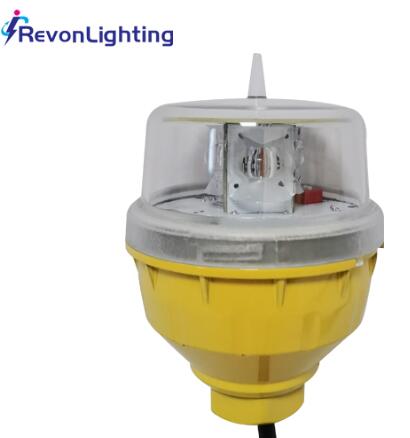Posted: 2024-06-13
In the realm of aviation safety, the visibility of tall structures is of paramount importance. To mitigate the risk of potential collisions, regulatory authorities have established guidelines for obstruction lighting systems. One such crucial component is the FAA L810 Obstruction Light. This article delves into the significance and features of the FAA L810 Obstruction Light in enhancing aviation safety and ensuring compliance with regulatory standards.
Understanding FAA L810 Obstruction Lights:
The FAA L810 Obstruction Light is a specialized lighting system designed to mark tall structures like buildings, telecommunication towers, and wind turbines. These lights emit a low-intensity red beacon, providing clear visibility to low-flying aircraft. The FAA L810 Obstruction Light strictly adheres to the standards set by the Federal Aviation Administration (FAA) in the United States.

Importance of FAA L810 Obstruction Lights:
2.1. Ensuring Aviation Safety:
The FAA L810 Obstruction Lights play a crucial role in alerting pilots to the presence of tall structures, especially during periods of low visibility, such as fog or darkness. By providing clear visual cues, these lights help pilots navigate safely and avoid potential collisions.
2.2. Compliance with Regulatory Standards:
The FAA L810 Obstruction Lights are designed to comply with the regulations set by the FAA. These lights emit a specific light pattern and intensity, ensuring their recognition by pilots. Compliance with these regulatory standards enhances aviation safety and reduces the risk of accidents.
Features and Benefits of FAA L810 Obstruction Lights:
3.1. LED Technology:
The FAA L810 Obstruction Lights are equipped with energy-efficient LED technology. LEDs offer numerous benefits, including reduced power consumption and longer operational life. This ensures reliable performance over an extended period while reducing maintenance costs.
3.2. Day/Night Operation:
The FAA L810 Obstruction Lights are designed for both day and night operation. During daylight hours, the lights are dimmed to reduce light pollution. At night, they emit the low-intensity red beacon, ensuring maximum visibility to aircraft.
3.3. Built-in Monitoring and Control Systems:
Many FAA L810 Obstruction Lights are equipped with built-in monitoring and control systems. These systems allow remote monitoring of the light's operational status, enabling timely maintenance and ensuring continuous compliance with regulatory standards.
| FAA L810 | Obstruction Light |
| low intensity 810 | type B |
| Type A | TYPE C |
Applications of FAA L810 Obstruction Lights:
4.1. Telecommunication and Broadcast Towers:
Telecommunication and broadcast towers are required to install FAA L810 Obstruction Lights to enhance their visibility to aircraft. These lights ensure that pilots can identify the presence of these tall structures even from long distances, reducing the risk of collisions.
4.2. Buildings and Rooftop Structures:
Tall buildings and rooftop structures located near airports or flight paths require effective obstruction lighting systems. The FAA L810 Obstruction Lights provide clear visual guidance to pilots, ensuring the safety of both aircraft and structures.
4.3. Wind Turbines:
The growing use of wind energy has led to an increase in the construction of wind turbines. FAA L810 Obstruction Lights are a crucial component of wind turbine systems, enhancing their visibility to low-flying aircraft and minimizing the potential for collisions.
Conclusion:
The FAA L810 Obstruction Lights play a vital role in enhancing aviation safety and compliance with regulatory standards. By utilizing LED technology, providing day/night operation, and incorporating monitoring and control systems, these lights ensure clear visibility to pilots, reducing the risk of accidents. Their application in communication towers, buildings, and wind turbines contributes to the overall safety of aviation. As aviation continues to evolve, the FAA L810 Obstruction Lights remain an essential component in ensuring safe and efficient air travel.